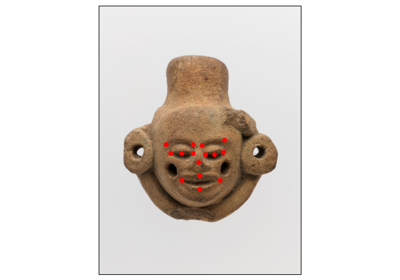RandomPerspective¶
- class torchvision.transforms.v2.RandomPerspective(distortion_scale: float = 0.5, p: float = 0.5, interpolation: Union[InterpolationMode, int] = InterpolationMode.BILINEAR, fill: Union[int, float, Sequence[int], Sequence[float], None, dict[Union[type, str], Union[int, float, collections.abc.Sequence[int], collections.abc.Sequence[float], NoneType]] = 0)[源代码]¶
以给定概率对输入执行随机透视变换。
如果输入是
torch.Tensor或TVTensor(例如Image、Video、BoundingBoxes等),它可以具有任意数量的前置批处理维度。例如,图像可以具有[..., C, H, W]形状。边界框可以具有[..., 4]形状。- 参数:
distortion_scale (float, optional) – 控制失真程度的参数,范围从 0 到 1。默认为 0.5。
p (float, optional) – 输入被变换的概率。默认为 0.5。
interpolation (InterpolationMode, optional) – 由
torchvision.transforms.InterpolationMode定义的所需插值枚举。默认为InterpolationMode.BILINEAR。如果输入是 Tensor,则仅支持InterpolationMode.NEAREST、InterpolationMode.BILINEAR。也接受相应的 Pillow 整数常量,例如PIL.Image.BILINEAR。fill (number or tuple or dict, optional) – 当
padding_mode为 constant 时使用的像素填充值。默认为 0。如果为长度为 3 的元组,则分别用于填充 R、G、B 通道。填充值也可以是映射数据类型到填充值的字典,例如fill={tv_tensors.Image: 127, tv_tensors.Mask: 0},其中Image将被填充为 127,Mask将被填充为 0。
使用
RandomPerspective的示例


